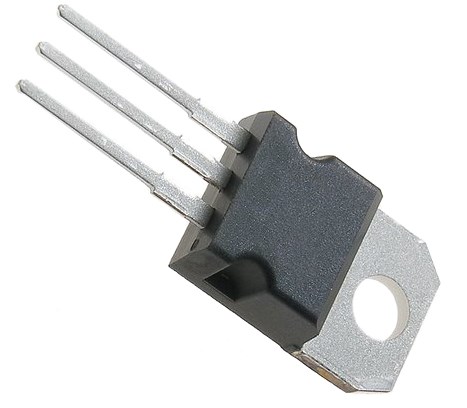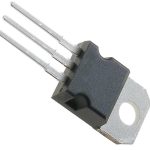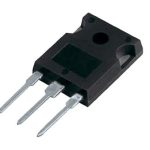Among the various types available, the TIP41C transistor stands out for its versatility and wide range of applications. Developed by Texas Instruments, this power transistor has become a popular choice in many electronic devices due to its robustness and excellent performance. In this article, we will analyze the TIP41C’s datasheet, circuit, equivalent, price and its comparison with TIP31C and TIP42C.
Why TIP41C by STMicroelectronics is a recommended choice?

The TIP41C transistor is one of the best choices for high-power switching and amplifier applications. Manufactured by STMicroelectronics, this transistor is known for its high current gain, low collector-emitter saturation voltage, and exceptional thermal stability. Its rugged design and high voltage rating make it ideal for use in a range of industrial and commercial applications.
TIP41C Datasheet
The TIP41C datasheet provides detailed information about the transistor’s specifications and characteristics. It includes essential data such as maximum ratings, electrical characteristics, thermal properties, and recommended operating conditions. The datasheet also provides graphs and tables that illustrate the transistor’s performance under different conditions, helping engineers make informed decisions when incorporating the TIP41C into their designs.
TIP41C vs. TIP31C
When comparing TIP41C and TIP31C transistors, there are significant differences in their specifications and features. The TIP41C is a PNP transistor, while the TIP31C is an NPN transistor. The TIP41C has a higher voltage rating of 100V compared to the TIP31C’s 60V rating. Additionally, the TIP41C has a slightly higher current gain of 25-100, while the TIP31C has a current gain range of 10-150.
Aspects where one is preferred over the other
The choice between TIP41C and TIP31C will depend on the specific requirements of the application.
The TIP41C is preferred for applications that require high voltage ratings or better thermal stability. In contrast, the TIP31C is recommended for applications that require faster switching times or lower saturation voltages.
Both transistors have similar power dissipation ratings and are cost-effective options for high-power switching and amplifier circuits. It is essential to consult datasheets and consider specific circuit conditions when selecting between the two.
TIP41C vs. TIP42C
When comparing the TIP41C and TIP42C transistors, it is important to note that they are complementary pairs, with the TIP41C being an NPN transistor and the TIP42C being its PNP counterpart. This complementary pairing allows for efficient use in applications that require both NPN and PNP transistors.
The TIP41C has a maximum collector-emitter voltage rating of 100V, while the TIP42C has a rating of 60V. The TIP41C has a slightly higher current gain range of 25-100, compared to the TIP42C’s range of 40-160. These differences in voltage rating and current gain make each transistor more suitable for specific circuit requirements.
Aspects where one is preferred over the other
The choice between the TIP41C and TIP42C depends on the application’s polarity requirements and voltage ratings.
The TIP41C (NPN) is typically used as a switch or amplifier for positive voltage applications, while the TIP42C (PNP) is utilized for negative voltage applications. Additionally, if the circuit requires a higher collector-emitter voltage rating, the TIP41C would be the preferred choice. Conversely, if a lower voltage rating is sufficient, the TIP42C can be utilized.
Both transistors offer reliable performance and complement each other in applications that require complementary pairs.
TIP41C Circuit
The TIP41C transistor finds extensive use in various circuit configurations, including amplifiers and switches. In amplifier circuits, the TIP41C can be used as a power amplifier to amplify weak audio signals or as a driver stage for larger power amplifiers. It exhibits low distortion and high gain, making it suitable for audio applications.
In switch configurations, the TIP41C can be used to control higher currents or voltages by acting as an electronic switch. It is commonly employed in applications such as motor control, relay driver circuits, and LED switching. The transistor’s high current handling capability, fast switching times, and low saturation voltage make it well-suited for these applications.
Practical considerations for circuit design
When designing circuits with the TIP41C transistor, it is important to consider factors such as heat dissipation, load requirements, and proper biasing. Due to its ability to handle high currents, the transistor may generate significant heat during operation. Adequate heat sinking or thermal management techniques should be implemented to ensure safe operating temperatures.
Additionally, proper biasing techniques must be employed to ensure stable and reliable operation of the transistor in both amplifier and switch configurations. Careful consideration of these practical aspects will result in optimal circuit performance and longevity.
TIP41C Equivalent

Some of these alternative transistors include the MJE3055, 2N3055, and TIP3055. These transistors have comparable voltage ratings, current gains, and power dissipation capabilities and can be used as drop-in replacements for the TIP41C.
Factors to consider when selecting alternatives
When selecting an alternative transistor, it is essential to consider factors such as compatibility with the circuit design, availability, and overall cost. While the alternative transistors may have similar specifications, they may not necessarily have the same pin layout or package type, which could affect their compatibility with existing circuit designs. Additionally, the availability of the alternative transistor and its cost compared to the TIP41C should also be considered.
TIP41C Price
The price range of TIP41C transistors varies depending on the supplier and volume purchased. Typically, the price for a single transistor can range from a few cents to a few dollars. The price per unit decreases when purchasing in larger quantities.
Factors affecting the price and availability
The price and availability of TIP41C transistors can be impacted by several factors, including supply and demand, market competition, and manufacturing costs. The price may also increase if the transistor is in high demand or if there are limited supplies available due to production delays or shortages.
Where to purchase TIP41C?
For you looking to purchase TIP41C transistors, one option is Estartrade-ic.com. We offer a wide range of electronic components, including the TIP41C, at competitive prices. We also provide fast shipping and excellent customer support, making them a reliable source for purchasing electronic components.
Conclusion
TIP41C transistor is a versatile component that plays a crucial role in various electronic circuits. Its ability to handle high currents, splendid amplification capabilities, and robustness make it an ideal choice for power applications. Whether it’s in audio amplifiers, power supplies, motor control circuits, or even as a simple switch, the TIP41C transistor has proven to be reliable and efficient.



